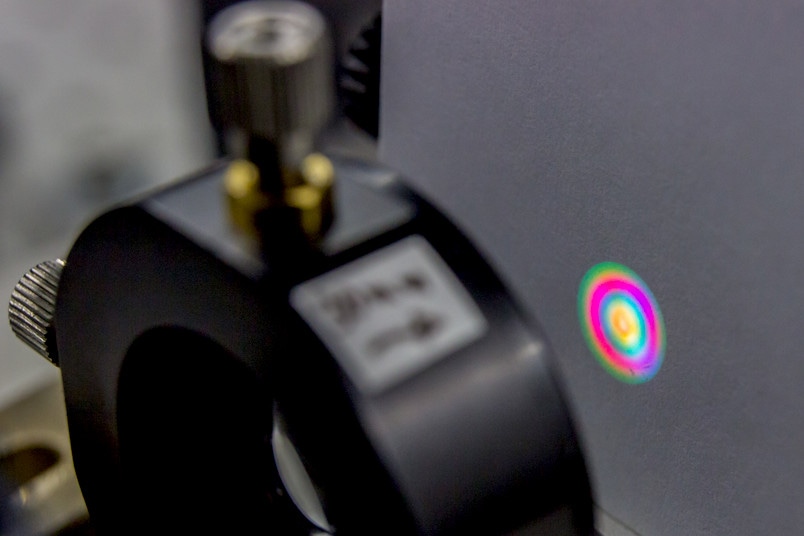Oct 7 2016
 Using advanced laser spectroscopy, researchers have gained new insights into how solvent molecules can influence chemical reactions. © Sebastian Goetz
Using advanced laser spectroscopy, researchers have gained new insights into how solvent molecules can influence chemical reactions. © Sebastian Goetz
Although solvent molecules in the environment seem to be uninvolved, they can be vital for chemical reactions. This has been revealed by researchers who have been examining the creation of an ether in pure solvents as well as in their mixtures.
They used advanced spectroscopic and theoretical methods to explain the causal mechanisms in detail. As a conclusion, the researchers stated that even solvent molecules that do not contribute directly in the reaction are necessary for the reaction process and they can significantly affect reaction partners.
A team of theoretical and experimental chemists from Ruhr-Universität Bochum, the Max-Planck Institut für Kohlenforschung in Mülheim an der Ruhr and the University of Würzburg published their study results in the journal “Nature Communications”.
Reactivity Switched on by Light
A flash of light can convert an inert chemical precursor into a very high reactive molecule that can respond with adjacent solvent molecules in less than a billionth of a second. The molecule diphenylcarbene that quickly reacts to an ether when methanol is used as the solvent, is one such example. However, this reaction may not be possible with the acetonitrile solvent.
The research team led by Prof Dr Patrick Nürnberger and Dr Elsa Sanchez-Garcia examined what happens when the diphenylcarbene molecule is present in a mixture of acetonitrile and methanol solvents. The ether formation happens more slowly in acetonitrile and methanol than in pure methanol, and the ether amount is also smaller. The researchers have explained the reason for this in their current study.
Second Solvent Molecule Crucial
One possible clarification could be that in the solvent mixture, the diphenylcarbene molecule has to wait longer to react with a methanol molecule.
However, the reaction is not as simple as assumed at first glance. There are several mechanisms at work.
Patrick Nürnberger, Bochum Chair for Physical Chemistry II
Though it appears that only a single methanol molecule is needed for the formation of the ether molecule, the reaction occurs only in the presence of a second methanol molecule. In order to arrive at this conclusion, the researchers used a combination of multiscale molecular dynamics simulations and ultrafast spectroscopic testes in the femtosecond range.
Not just Bystanders
The researchers have explained the reaction mechanisms in detail for two scenarios. In the first scenario, diphenylcarbene initially meets a single methanol molecule and later, another molecule is added. In the second case, diphenylcarbene directly meets a methanol molecule compound.
In these two cases, it is revealed that a single methanol molecule alone is not enough to cause the reaction.
The other methanol molecules are thus not just bystanders, but rather assistants in the reaction. The results are an important part of understanding the interaction of reactive substances with the solvent environment.
Patrick Nürnberger, Bochum Chair for Physical Chemistry II